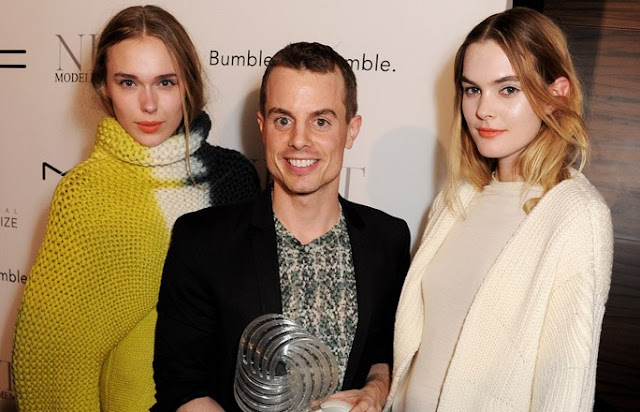As the Global Creative Director of ck Calvin Klein, Calvin Klein Jeans and Calvin Klein, Kevin Carrigan oversees the unified seasonal design aesthetic, direction and product design, including fabrics and colour palettes, for the multiple categories for which he is responsible. Mr. Carrigan collaborates with Calvin Klein Retail, and men’s wholesale arm of Calvin Klein, to ensure consistency of the design direction, and also consults with licensees on Calvin Klein underwear. He joined the group in 1998 initially as Design Director of cK womenswear. He honed his skills as a designer at MaxMara in Italy as well as Nicole Farhi in London. The multitalented Mr. Carrigan also designed costumes for the film Death Becomes Her and the play Body Without a Head, as well as the uniforms for Jean-Georges Vongerichten’s famed Perry Street restaurant in New York City.
Calvin Klein Global Creative Director, Kevin Carrigan.
This is a fantastic opportunity for any designer to participate in a globally-focused project based on Australian wool and Merino. It has a rich history; there’s been so many designers that have been part of the competition and worked with wool. At the same time, it’s a challenge because wool is a fabric we all wear, yet we need to constantly re-invent it. We need to push forward with new, young eyes to make a fabric that is relevant to consumers today, versus what it was when Karl Lagerfeld and Yves Saint Laurent did it. Or when Missoni did it in the Seventies. Or when I did a project with MaxMara and the International Wool Secretariat, as The Woolmark Company was called then, when I was at the Royal College of Art. So, it’s an amazing opportunity to work with noble fibres, yet it’s a challenge, too.
What makes wool an interesting fabric to work with?
Funnily enough, I’ve personally been working on wool-denim development. Denim has had a huge effect on our industry over the last 30 years, and it’s really taken over every aspect of our lives in the last eight to 10 years. For a guy, you can go to a black tie event, put on a tuxedo, but you can still wear jeans. So, the idea of putting denim and denim weaves into wool to become a part of men’s or women’s tailoring is very interesting.
There are many things you can do with wool as a fibre and I think that’s why it’s held its esteem. You can: boil it, felt it, embroider it, knit it lightweight, have heavy weights of it, bond it, put it next to leather, bond it to leather. You can horsehair it, use it in couture, then bring it down to denim. It has a real accessibility. At the moment, I think there’s a trend away from futuristic fabrics back to the natural, the sensual, something that has a little bit more integrity and honesty.
ck Calvin Klein's Fall 2013 ad campaign, overseen by Kevin Carrigan.
What have been your impressions of emerging talent from Asia?
It’s been really interesting to be a part of this and to see the regional designers from Japan, Korea, Hong Kong and China. I’ve been coming to China for 20 years, it’s one of Calvin Klein’s number one markets, and we have offices here.
When the judging panel looked at the candidates, it wasn’t just about their success regionally. The question was, “Can they make it globally?” Like a Calvin, a Donna, and a Ralph of their day. Like a Marc Jacobs, a Michael Kors, and the new generation of Altuzarra, Jason Wu, Alex Wang. These young designers want to be on the international platform, like Rei Kawakubo did in the Eighties or Yohji Yamamoto - strong designers that have a voice. Some of the candidates we saw already have successful businesses within the region. The question is where can they go next? Can they sell and be recognised internationally, represent the region and Woolmark, and do it successfully? I think everyone wants that to happen. All of us around the world sell so much fashion in Asia, we need to also support the growing talent here to then sell around the world, too.
Calvin Klein Global Creative Director, Kevin Carrigan.
How important is the IWP to emerging designers and to the fashion industry in general?
I think they’re very important. You get feedback from your peers, which I don’t think you’d normally get. I was talking to Angelica Cheung about going forward with the regional prize for Asia. I don’t want to just say, “You’re the winner.” It shouldn’t be about just the prize giving. What’s next for them? How we can teach them and help them grow? I don’t think they have a lot of people they can talk to. Now, they can call me or send me an email. That’s what’s great about the BFC and the CFDA. Calvin never had that when he was launching. That infrastructure is really important. We need youth, talent, new houses to break through, fresh eyes that are relevant and useful.


























































